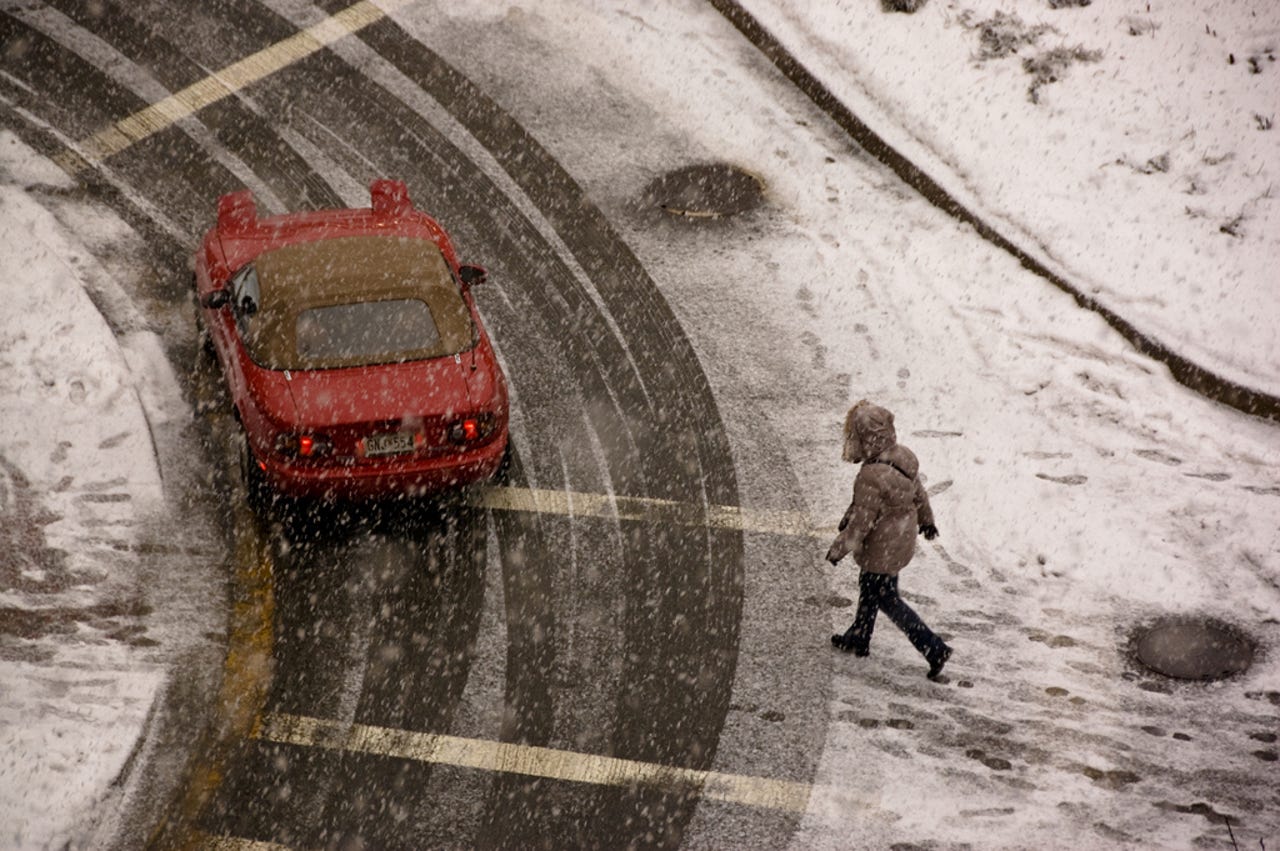Innovation
How snowstorms reveal clues for improving pedestrian safety
Snow can create hazardous streets and sidewalks. But patterns left behind on streets can help improve pedestrian safety later on.


Up to this point, it's been an incredibly snowy winter across much of the United States. On the roads it makes for a slippery, dangerous commute for cars, pedestrians, and bikers. Unless you own a pair of cross-country skis or a snowmobile, it hasn't been an easy winter to get around. Fortunately, those transportation sacrifices this winter could reap rewards in safety later on.
That's because when a snowstorm dies down and people begin to brave the roads again, the snow on the roads reveals patterns that show where cars go and where they don't. You can actually visualize the efficiency of a street. Is there 10 feet between the sidewalk and the tire marks along a downtown street? That street isn't being used efficiently and it's probably not as safe for pedestrians as it could be.
Cities are developing all kinds of ways of improving pedestrian safety. One tool that aims to improve pedestrian safety is traffic-calming infrastructure. One specific way to do slow down traffic is something urban planners like to call a neckdown, or curb extension. Used on street corners, for example, this street infrastructure can reduce the exposure of pedestrians to traffic and slow down cars because the neckdowns necessitate wider turns, and create greater pedestrian visibility.
And when it snows, a natural, but temporary, snow neckdown -- or sneckdown -- is created. Streetfilms explains how to find sneckdowns in your own city in this fascinating video after a major snowstorm a few winters ago:
The best part: it's a low-tech, inexpensive way to find solutions to better streets. As Clarence Eckerson Jr. the creator of that Streetfilms video told BBC: "It's free. You don't have to do a crazy expensive traffic calming study. It provides a visual cue into how people behave in transportation."
But it isn't just urban planners who are using this tactic; city residents have been taking to Twitter to reimagine and redefine their streets and sidewalks, using #sneckdown. Need more inspiration? The blog This Old City has lots of great examples of sneckdowns in Philadelphia.
This post was originally published on Smartplanet.com